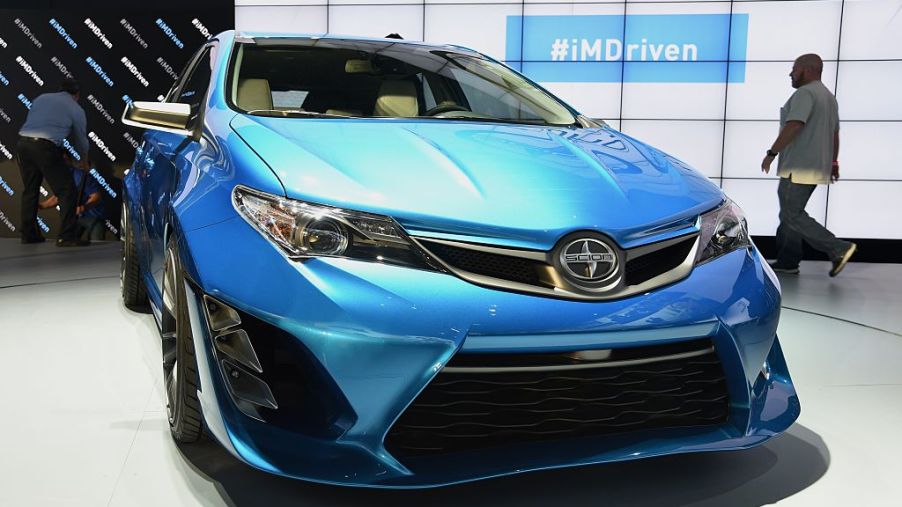
Why Did Toyota Decide to Discontinue Scion?
It’s not uncommon for companies to switch up marketing tactics to appeal to a younger audience. You may be familiar with Scion, Toyota’s smaller company. Before this brand was successful, Toyota tried to launch “Project Genesis” vehicles. These cars were supposedly more youthful versions of existing Toyota vehicles.
Both the Toyota Celica and the MR2 Spyder were products of Project Genesis. However, because the cars were from segments that weren’t as popular with younger buyers, the project quickly failed. Soon after, Scion was founded, which earned a massive uptick in sales for Toyota. The success wouldn’t last: after 13 years, Scion was discontinued. What went wrong for Scion?
Scion’s popularity
Only seven different Scion cars were ever released, but perhaps the most recognizable one was the Scion xB. Despite being a compact car, it had a distinct rectangular appearance usually common for larger SUVs. During its initial release year, 75,000 units were released. Due to the xB’s huge success and buyer demand, Scion produced 100,000 units each year afterward.
Two of the biggest draws of this car were its low price and its large cargo capacity. The xB never retailed for over $18,000 during its entire lifetime. It also had enough storage space to rival several SUV competitors at the time. Models from 2008 even had standard iPod connectivity, a few years before Apple CarPlay was made.
The history of Scion
Scion was first announced at the 2002 New York Auto Show. The automaker showcased two of its upcoming vehicles: the future xB and tC. The tC had a more sporty appearance and a faster engine. However, in later years, it couldn’t keep up with competitors like the Honda Civic.
Along with the tC and xB, the highly stylized Scion xD was also available soon after Scion’s initial launch. At the time, it looked like Scion was going to be a long-standing success. For its first year, the automaker made over 170,000 sales.
Why was the company discontinued?
Despite high sales figures initially, Scion’s numbers would eventually decline. In 2010, only around 45,000 units were sold. Most speculate that the drop was due to a combination of Toyota’s gas pedal problem and the Great Recession.
The cars themselves were also part of the problem. Rather than continue to redesign its existing vehicles, Scion only occasionally refreshed the exterior designs. These refreshed models always turned out to be less popular among consumers than the originals.
Scion attempted to save itself by rolling out new cars. In 2012, it released the iQ, specifically marketed towards commuters in big cities. Scion also released the FR-S sports car around the same time. These models failed to garner anywhere near the number of sales needed for the company to stay afloat.
Scion seemed to have lost the target audience it initially wanted to attract. These youthful customers were perfectly happy buying existing Toyota vehicles. Because of this, it made more sense for the parent company to integrate Scion’s cars into its main lineup. The Scion brand was officially discontinued in 2016.
How Scion lives on
While the iconic xB was phased out entirely, a few former Scion cars are still on the market under new names. To help bolster the smaller company’s sales, Toyota rebadged two of its existing models as Scion cars. The Scion iA and iM were versions of the Yaris and Corolla, respectively.
The Scion FR-S was renamed the Toyota 86. The car was heavily restyled for 2017, with a new body and updated suspension. As of 2020, the 86 is one of the most affordable sports cars on the new market.



